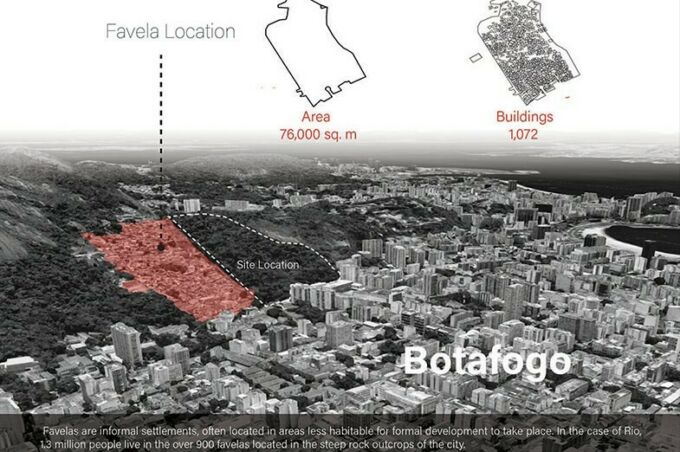December 05, 2019
Stuckeman School student projects earn regional ASLA awards

UNIVERSITY PARK, Pa. – Two student projects submitted by the Department of Landscape Architecture at Penn State were recently recognized by the Pennsylvania-Delaware (PA–DE) chapter of the American Society of Landscape Architects (ASLA) through its 2019 Student Awards Program.
An interdisciplinary collaborative project by four recent Stuckeman School alumni earned the highest honor in the Student Collaboration category. Cristina Frass, Kyle Johnson and Hannah Wynn, all 2018 landscape architecture alumni, along with Bernardo Almeida, a 2018 architecture alumnus, earned an Honor Award for their spring project based on informal settlements in Rio de Janeiro, Brazil.
Supported by the Stuckeman Center for Design Computing in the Stuckeman School, the Decoding and Recoding Studio is a collaborative course that examines how informal settlements are developed without planning guidelines or infrastructure. Students are exposed to a wide range of technologies – including virtual reality and design computing systems – designed for architects and landscape architects to study the region and offer design solutions. Focusing on locations like Rio and Ahmedabad, India, the studio decodes how the settlements are constructed and models potential growth patterns using design programming systems.
“The most important aspect of the studio is that the students are challenged to use these tools of privilege to learn how marginalized communities address daily needs and create independent, thriving communities,” said Marc Miller, assistant professor of landscape architecture and co-coordinator of the studio.
“Softening the Edge: A Strategy to Reduce Air Pollution in Houston’s Fence-line Communities” by Frass, which was her thesis project for the Schreyer Honors College, also earned a Merit Award in the General Design category. Under the direction of Miller and Larry Gorenflo, professor of landscape architecture and the Eleanor R. Stuckeman Chair in Design, Frass completed an analysis of low-lying lands in Houston through the lens of environmental justice, neighborhood stabilization and environmental risk.
After mapping and extensively researching the area, she developed a project that focused on mitigating pollutants from petroleum plants that are located next to the community. Focusing on air quality, she proposed a green machine/filter park to intercept and process particulate pollutant material before it could reach the adjacent community.
“Cristina’s research started with looking at flooding, industrial sites and marginalized communities; but as she developed her research, she realized that her focus needed to be less about flooding and more about air quality. Moving away from the water led her down a unique path where she learned about biofilters that clean the air.” – Marc MillerIn addition to General Design and Student Collaboration, categories in the awards program include Residential Design, Analysis and Planning, Research, Communications and Student Community Service. Honor, Merit and Special Recognition Awards are given in each of the categories. PA–DE ASLA is comprised of more than 581 members with 189 student members from four geographic regions: Eastern Pennsylvania, Central Pennsylvania, Western Pennsylvania and Delaware, and student members from six colleges.
